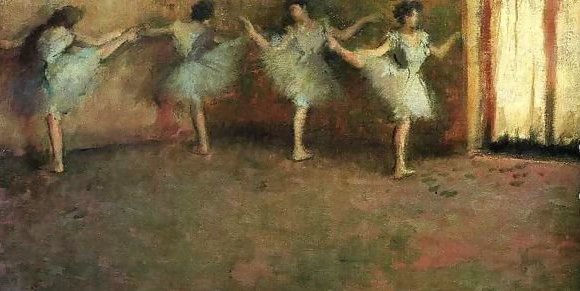Art is what you make others see - Degas
- Shobitha Hariharan
- Feb 12, 2020
- 2 min read
It was not until after Degas’s death, that his work came to be known and appreciated. Certain aspects of his achievements came to be known for the first time - his 150 sculptures and collection of paintings by other master artists and Japanese prints. Edgar Degas [1834 – 1917] was a French artist famous for his paintings, sculptures, prints, and drawings. More than half of his works depict ballet dancers.
Degas began to paint early in life. At 18, he turned a room in his home into an artist's studio. He registered as a copyist in The Louvre Museum.

Ingres, an artist whom Degas revered and whose advice he never forgot: "Draw lines, young man, and still more lines, both from life and from memory, and you will become a good artist.” He studied art in Paris and Italy. He painted numerous copies of works by Michelangelo, Raphael, Titian, and other Renaissance artists.
He is regarded as one of the founders of Impressionism, though he preferred to be called a ‘Realist’. He took a leading role in organising eight Impressionist’s exhibitions. His scenes of Parisian life, off-centre compositions, experiments with colour and form, all relate him to the Impressionist movement. Technically, Degas differed from the Impressionists in that he continually belittled painting en plein air. His style reflects his deep respect for the old masters.

Degas photographed dancers and nudes which were often used as references for his paintings. He painted women at work like dancers and laundresses. Dancers were shown backstage during rehearsals, as professionals doing a job. Degas’s canvases reveal his curiosity on how a person’s nature of employment is apparent in their clothing and physical attributes. His ballerina was athletic while his laundress was rather stout.
His manner of capturing light falling from unusual angles on people in unconventional postures made his paintings unique.
He also painted life in a cafe.
Horses and horse racing were also key subjects for Degas. He was fascinated by the study of bodily movement. Degas produced about 45 oil paintings of horse races. He also made sculptures, pastels and studies of horses. His paintings focused on the moments just before the start of a race to capture the restlessness of the horse and the rider.
Degas wanted to be a history painter. He became a fine art painter of modern life. Degas displayed only one sculpture publicly during his lifetime.
His use of lines to create unique compositions in his paintings is notable.
He preferred to work indoors in his studio from sketches, photographs, live models and memory in the traditional academic manner. "In art, nothing should look like chance, not even movement”.
Painting is easy when you don't know how, but very difficult when you do.“ Degas is now considered as one of the most accomplished artists who is said to have influenced Picasso too!
-----
Published in Colour Canvas issue of August 2018









Comments